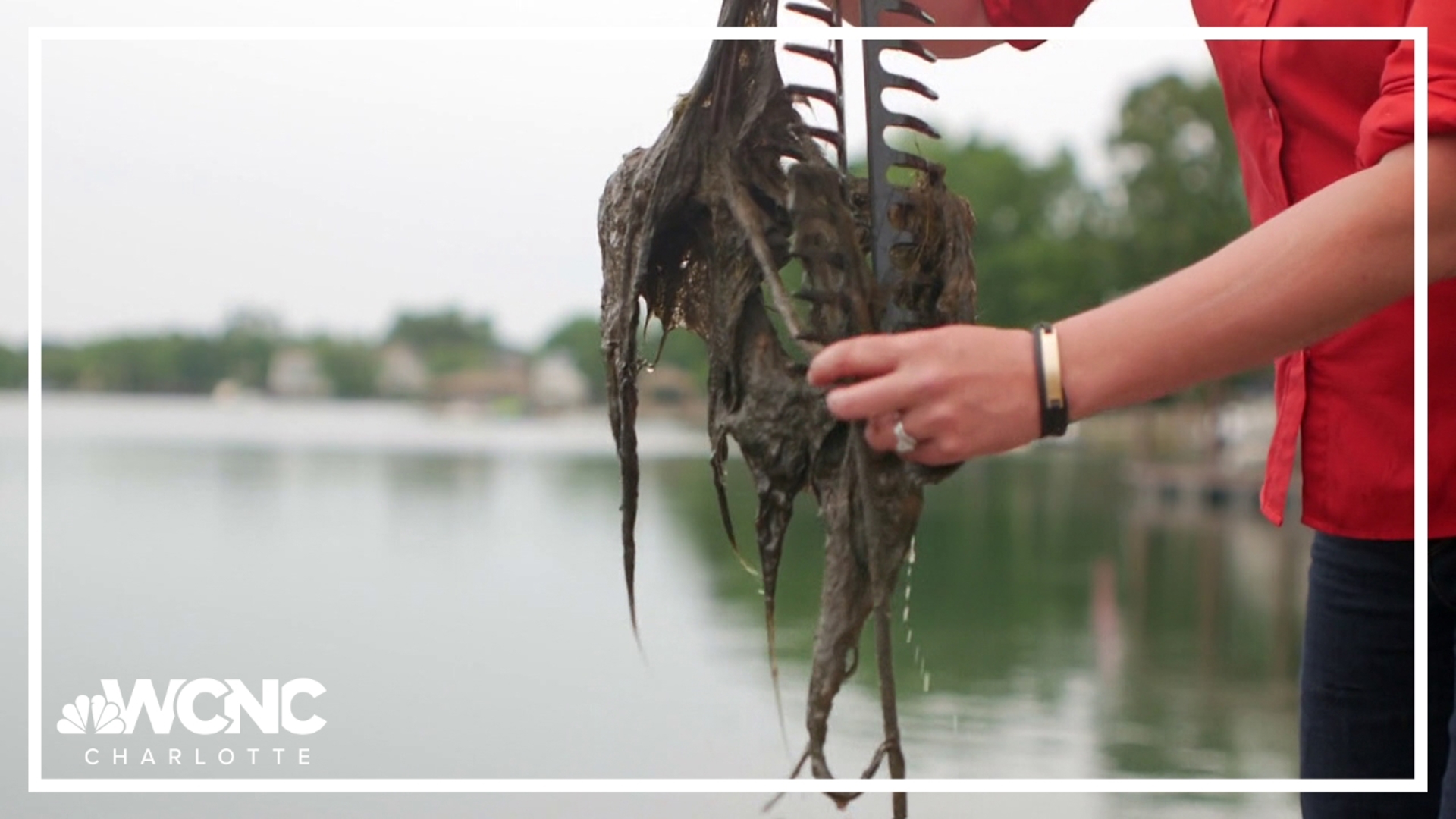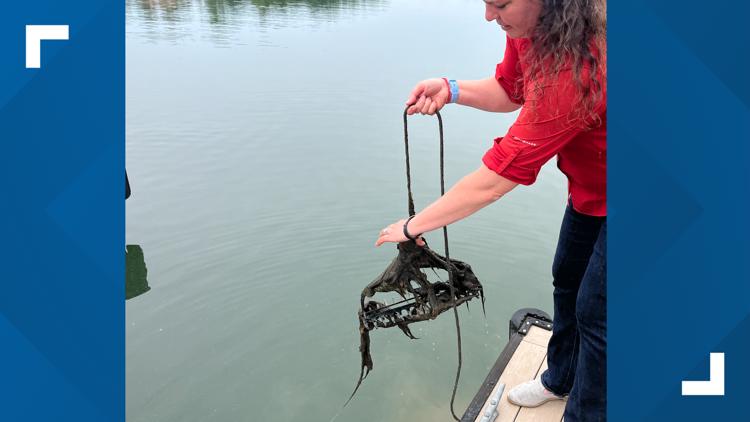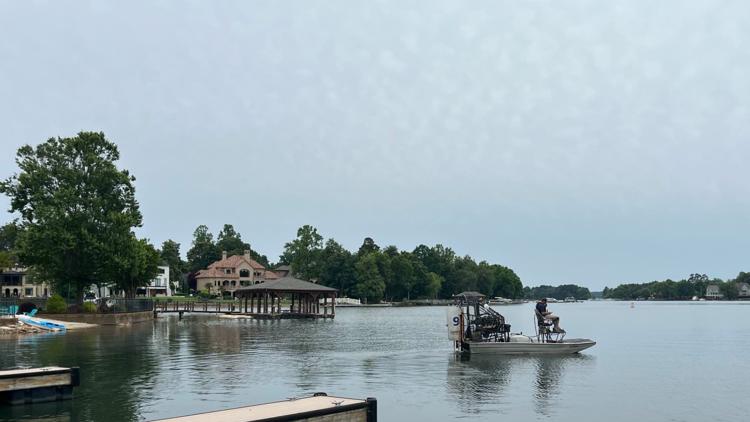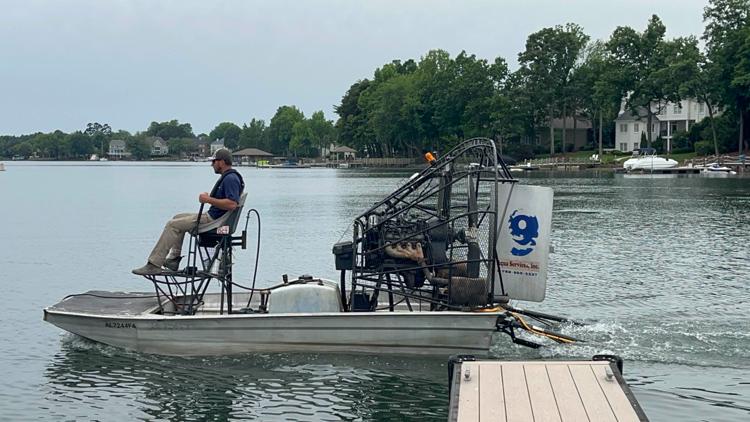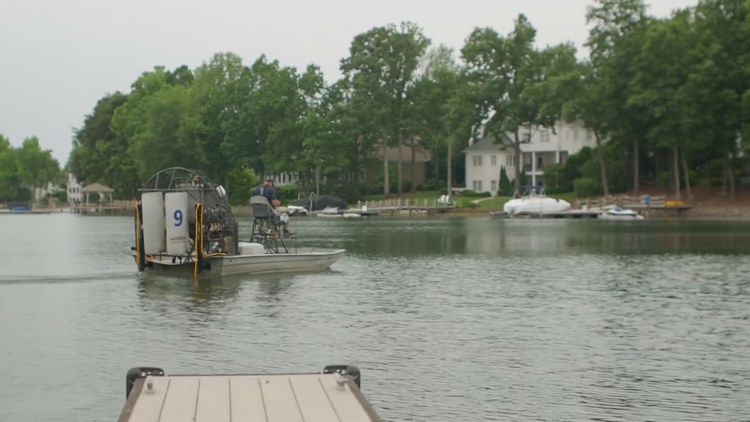CORNELIUS, N.C. — It’s a growing problem in Lake Norman and it can become harmful: Blue-green algae.
But since mid-April, a treatment plan has been underway to stop it from growing out of control.
Bob Van Dolah, chairman of Lake Norman Marine Commission's Environmental Committee, said blue-green algae, or lyngbya, is an invasive algae that's been a problem for about two years.
"It’s not an algae species you want to have in the lake," Van Dolah said.
Early this year, homeowners in Cornelius brought up complaints and a need to fund a treatment plan.
"I started asking people what it is and nobody knew what it was," Robert Watson, who lives in a lakefront home in Cornelius, said. "I’ve got grandkids that come over swimming. You can’t even have them swimming in it. Anywhere near it. "
It all came together by February -- agencies like Duke Energy, Charlotte Water as well as several city and county governments are providing $60,000 in funding.
The treatment is being led by the NC State Extension due to its work studying the same algae in Lake Gaston.
Extension associate, Jessica Baumann, said the lyngbya there has taken up about 1,300 acres.
"We’ve done a lot of research and we kind of figured out a good treatment program that we’re seeing results in Lake Gaston with," Baumann said. "So we’ve taken that same program and we’re applying it to Lake Norman."
The treatment plan consists of distributing an underwater algicide via airboat and attacking the lyngbya at a cellular level.
Treating the lake
Baumann said the 10 acres of algae in Lake Norman will need the treatment once a month for about six months, but it could take two years or longer to see any results.
"We’re kind of tackling the problem really early in the infestation stages," Baumann said. "I’m excited to see how quickly [Lake] Norman responds, and if we can get these 10 acres under control and in two years instead of four years. "
She said the NC State Extension is still researching what environmental changes are causing lyngbya to grow so fast. It's warm temperatures that cause the algae mats to rise up to the surface of the lake.
It’s not only an unattractive growth, but it can become toxic.
"The severity of those toxins is very low," Baumann said. "What you’re going to get is commonly just called swimmers rash, so it’ll irritate the skin."
The algae has also been detected in Lake Wylie.
The next algae treatment for Lake Norman is planned for June 10 and will continue each month until September.
Then another evaluation will take place to determine how much more treatment is needed to fully get rid of it.
Homeowners like Robert Watson said it's good something is being done before it gets worse.
"We’re trying to make this lake the cleanest lake in North Carolina and that’s our goal," Watson said.
The Lake Norman Marine Commission encourages homeowners and anyone recreating on the lake to report the algae species if they see it on Duke Energy's website.
WCNC Charlotte To Go is a daily news and weather podcast you can listen to so you can start your day with the team at WCNC Charlotte.
SUBSCRIBE: Apple Podcasts || Spotify || Pandora || TuneIn || Google Podcasts || iHeart
All of WCNC Charlotte's podcasts are free and available for both streaming and download. You can listen now on Android, iPhone, Amazon, and other internet-connected devices. Join us from North Carolina, South Carolina, or on the go anywhere.

